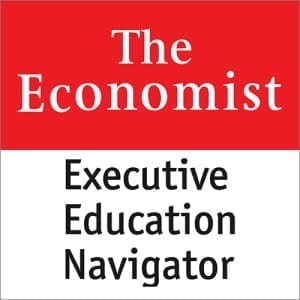Any conversation on business competitiveness begins and ends with a discussion on innovation, a practice defined as “the fusion of invention and commercialization” by Ken Morse, founder of MIT’s Entrepreneurship Center and a leader of ESADE’s Open Innovation and Corporate Entrepreneurship programme.
There are three general types of innovation – incremental, radical and open. Of the three, open innovation (OI) appears best-suited for the fierce global competition among firms of all sizes as innovation cycles shorten. Open innovation refers to the practice of looking outside of your organization for ideas and technology to accelerate and improve business solutions. Formally conceptualized by Henry Chesbrough, the methodology is gaining a foothold in entrepreneurially-minded corporations even as it challenges organizational cultures.
How open innovation works
In a perfect OI world, new products, services and business models are produced faster and better through collaboration among company stakeholders, startups and universities. Why? Because “companies recognize that not all of the smart people work for them, and in-house R&D labs can’t create all the innovation necessary to stay competitive,” explains Morse. So, they bring their experience and ideas together in mutually beneficial partnerships.
First, large companies identify startups whose technology matches their needs and become their first customers. Then, they invest further to ensure supply. University R&D centres receive sponsorship for their research activities, and larger firms maintain their competitive advantage by getting new inventions to market faster: “continuous innovation is not an option, it is imperative to success,” he stresses.
Keywords in OI are “inflows” and “outflows”, referring to the direction that ideas and technology move. Firms incorporate knowledge and inventions from outside sources into their innovation processes. Any ideas or developments that are not utilized, however, flow back outside for other organisations to take up, sometimes through joint ventures, licensing or spin offs.
Any company with ambition and global potential can benefit from OI
L Brands, owner of the Victoria’s Secret and La Senza labels, for instance, collaborated with Mast Industries to revamp production using Mast’s deep expertise in rapid sourcing, manufacturing and logistics. L Brands ended up acquiring the company as Mast Global.
How do these disparate parties find each other for open innovation collaboration? That’s a growing industry in itself. Consultancies now specialise in identifying and bringing partners together, and some large companies have in-house scouts, typically company veterans who know the products well and have easy access to the CEO. Global players like GE and Lego have created their own platforms whereby anyone can share new product ideas, and the company supports implementation of the winning ones. University and government research centres like MIT’s Startup Exchange , Startup NASA and UnternehmerTUM in Munich provide places for innovators to connect. Well-known entrepreneurs and networking aficionados like Morse also play a role. “Big companies don’t know how to find those small companies, so they call me and people like me,” he explains.
How to organise for an OI environment
Understandably, OI represents for most companies an entirely new way of developing products, and the culture change can be hard. Leadership makes the difference, Morse emphasizes: “All companies that are doing well with open innovation have made the decision from the top.” Driving strategic innovation from the C-suite is crucial, he believes, in order to “prevent middle-management from watering down programmes.” Also important is the recognition at all levels that failure is inherent to the process of invention and should be seen as part of the learning curve.
Training for the shift
ESADE’s open innovation programme in Barcelona hosts 40 to 50 students each session for an intense five days — two days on OI methodology, two days on sales strategy and elevator pitching, and a wrap-up day of presenting business plans to juries of experienced entrepreneurs and innovators. Morse considers the sales strategy part critical to the success of innovation as “commercialisation is all about sales and acquiring customers.” In his research at MIT, his team found that building the right sales model was actually a better determinant of corporate success than technology. “Pitching is key” to getting your ideas accepted throughout the innovation process, he adds. Morse and other course leaders – including Chesbrough, the “father” of OI – draw on exclusively European company case studies, and require students to prepare and deliver a pitch on a business idea. Most of the participants are executives in established companies in Europe and Asia.
Harvard Business School’s Leading Product Innovation teaches participants to bring flexibility into the product development process, including OI methodology. Participants in The Innovative Organization programme at Berkeley learn strategies to develop an innovative business culture within their organisations while receiving plenty of real-world open innovation examples from Silicon Valley. Finally, the joint MIT/IMD course Driving Strategic Innovation is similar to ESADE’s minus the pitching element and engagement with real-world executives.
As revolutionary as it is, OI is not set to overtake other innovation methods. Morse is quick to acknowledge that it is but one of the tools companies can use, and that most should be pursuing innovation on several parallel tracks. A leader’s job is “to consider alternatives, make investments and remember that it’s all about people,” adds Morse. Corporate leaders who have not yet taken a close look at open innovation might want to start if they wish to keep their organisations out in front.
Kate Rodriguez is a former senior career search researcher and government analyst who covers career development and higher education marketing for The Economist Careers Network.




































